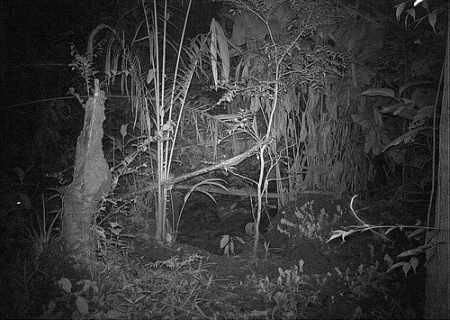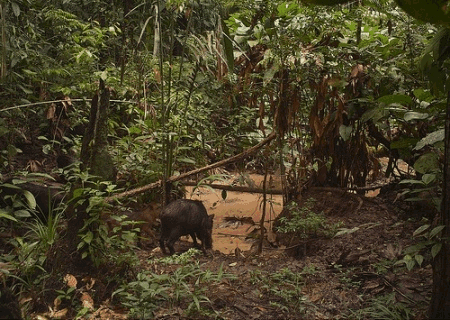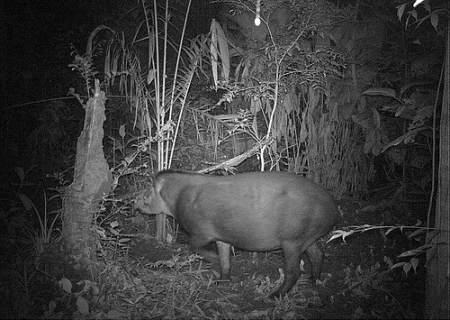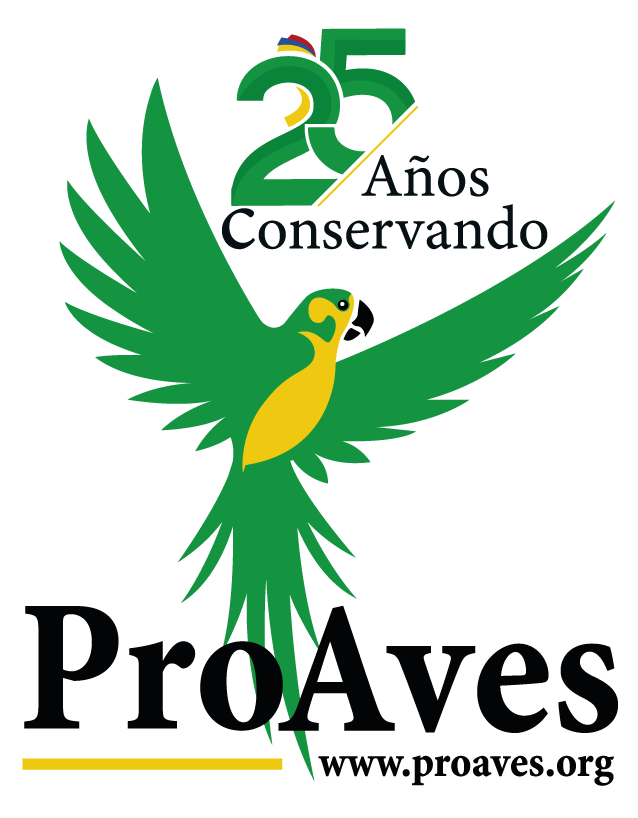ProAves has used this technique for many purposes, from identifying individual species to assessing population size and various aspects of their ecology and behavior, the use of trap cameras is one of the most important and versatile methods for biological research for conservation purposes; they allow behavioral studies, activity patterns and population estimate, among others to be made.
The trap cameras were installed in July and during the 20 days spent capturing photographic records it was possible to identify a female deer (Mazama americana), apparently pregnant, while we also got a spectacular record of a Jaguar (Panthera onca), almost extinct in the department of Casanare, which shows the importance of ProAves conservation actions in transitional forests of the Orinoco to the Amazon.
 |
| Register with camera traps a Jaguar (Panthera onca). |
 |
| Register with camera traps individuals Cajuches (Tayassu pecari). |
 |
| Register with camera traps of Danta (Tapirus terrestris) |
A herd of Collared Peccary (Tayassu pecari) of around 150 individuals, among adults and juveniles, was identified for the first time; likewise a very important register of a Crestless Curassow (Mitu tomentosum) was made.
This time the cameras were installed in lakesides or salty wetlands, a favorable environment where these species find vital nutrients and minerals.
This tool has been used by ProAves in studies while monitoring the population of Crax Alberti, Ateles hybridus and Tremarctos ornatus, among others and to check for the presence of other species of mammals and birds in protected areas located in the most threatened ecosystems in our country.
Thanks to its implementation, at least 40 species, between birds and mammals, have been registered, the majority of special interest for their conservation status or level of endemism, and others for their scarce records and being considered as rare species.
At ProAves we hope to continue to use this method in studies of biodiversity, abundance and population monitoring and of special interest for the conservation of several species of flora and fauna in our country.
